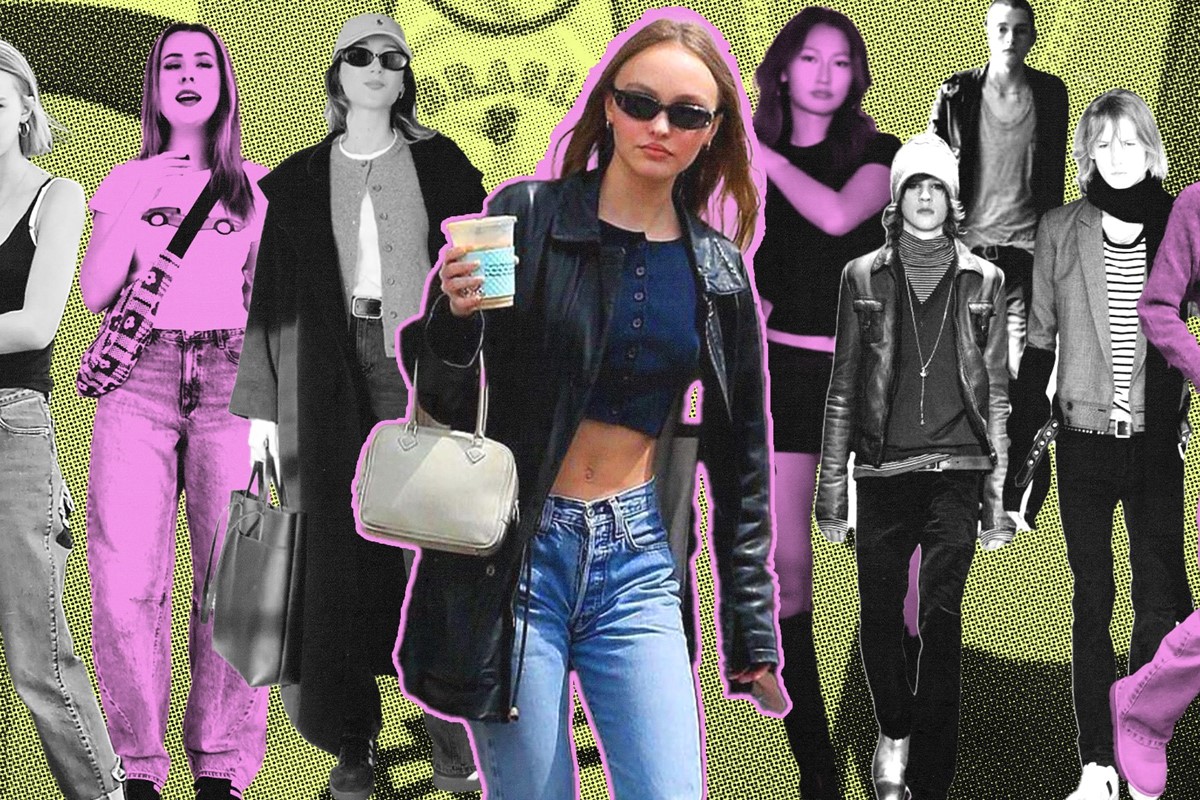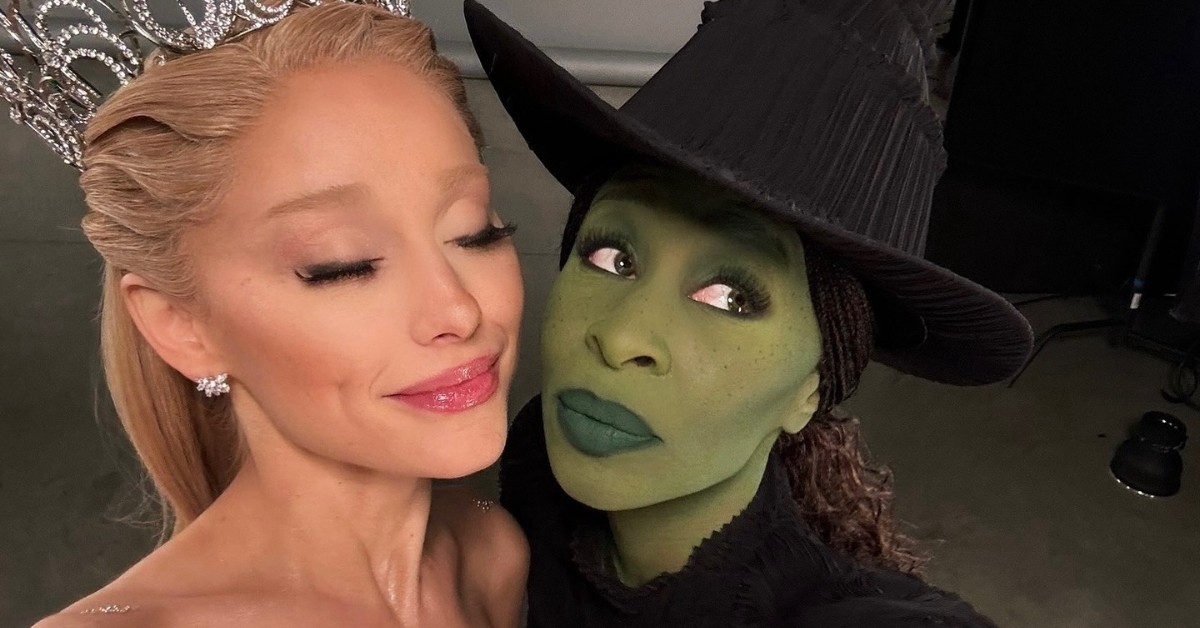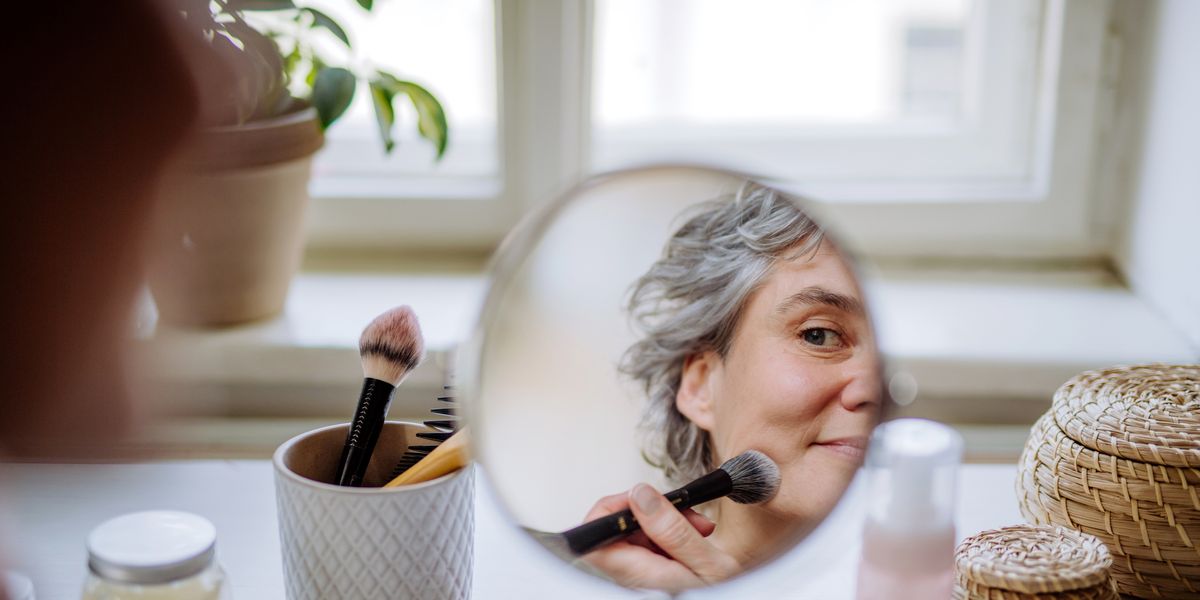
My friend at CSM tells me that students are dressing basic. She doesn’t mean this in a derogatory way, but rather to suggest a wider shift at play – a change in the fashion tides. The next time I pass through the Kings Cross campus, I see for myself. She’s right. Whereas past years’ students flooded the streets with increasingly out-there, DIY looks to signify a certain performative ‘art school cool’ – documented in annual youth culture mag social media schedules, and parodied on countless anonymous Instagram accounts such as the now-defunct @thats_so_CSM – today’s cohort favour an algorithmic type fit. There are Pinterest girls and Miu Miu-coded girlblogger types dressed in a mix of vintage and secondhand designer. There are tonnes of grey jumpers and blue jeans with brown boots. It’s the sort of pared-back fashion that you’d expect to see a liberal arts student wearing in 2005, except now it’s considered cool, desirable even.
“People are more suspicious of super extra outfits or alternative styles,” my friend tells me, signalling a pointed turn away from the maximalist Drainer and hyperpop aesthetics that dominated the post-pandemic years. Are people simply embracing their inner basic-ness, or is this an indication of a numbing of our sartorial senses, a symptom of choice paralysis, nostalgia and fashion NPC brain rot?
That evening, I see a meme from the account @meme_saint_laurent about a recent Snow Strippers concert. “Snow Strippers concert felt like a Jaded London casting (derogatory),” it goes, hinting at the instantly reproducible nature of ready-to-buy cool. As is the growing popularity of archive fashion TikTok, or practically any niche subculture aesthetic online, any garments that might have once indicated a certain kind of insider status is easy to tap into – just scroll through the countless archive fashion ‘how-tos’ on Reels or Pinterest boards. Similarly, the inching popularity of Drain and Rick Owens has meme’d the gothic-tinged aesthetic into the mainstream, refreshed by a new gen of hyper-online music acts such as Sematary and 2hollis, inspired by Y2K Japanese subculture, visual kei. The same vibe can be felt scanning the products on Jaded Man, which clearly pull from the same references. Or Jaded Women, which feels tailor-made for the sort of self-proclaimed hot girls that post selfies of themselves in a Mowalola WET tank top on IG. But it’s a new year and the fashion NPCs, as they’re referred to online, are swapping out their LGB fur hoods and Opium swag of 2024 in favour of Hedi Slimane for Dior and Babyshambles sleaze (as opposed to the electroclash fluorescence of indie yester years) – which begs the question: has dressing ‘basic’ become the new cool? And if so, why?
Mina Le asks a similar question in her recent video “the death of personal style”, where the YouTuber addresses her own style transition from “maximalist to basic”, which she credits to the neverending onslaught of microtrends and algorithmic sameness that dominate the fashion sphere today. She concludes that the only solution for those in the know is to consciously dress basic. I admittedly first noticed this temperature shift last year, coincidentally around the time that the four lads in jeans posted a renewed pic in baggy pants and Jade Thirlwall, a mainstream UK popstar by all accounts, bleached her eyebrows and donned a pair of New Rocks. At the same time, club kids who had dressed full-on alternative a year or two back – hyper-maximalist variations on emos, pastel goths and posthuman tribal-isms – were dressing noticeably plain, the occasional post-ironic Hollister polo or trucker hat evocative of the apparent vibe shift. Nowadays, it seems that what constitutes cool isn’t dressing edgy, but rather it’s the quality of your clothes, the hidden layers of cultural cachet that exist in knowing that the microshort or knit jumper you purchased is from Cafe Forgot or bespoke brands like Lucila Safdie and Sherris, instead of, say, Urban Outfitters or Target. As Roland Barthes once put it: “One detail is enough to transform what is outside meaning into meaning, what is unfashionable into fashion.” That is to say, the style might be basic, but the subtext certainly isn’t.
Performing basic-ness might seem a particularly new approach for the younger generation’s it-crowds who’ve grown up with overwhelming access to brands and micro-trends, coinciding with the rise of ultra-fast-fashion and falling manufacturing costs for increasingly elaborate garments. The Temu-ification of everyday style saturates our smooth brains, its infinitely reproducible nature accelerated using, at times, absurd, low-quality AI images and disorientating users with a slew of promptcore product descriptions such as ‘Round Toe Belt Buckle Shoe Womens’ and ‘American Retro False Flare Pants Woman Low Waist Stretch’ – the UI-friendly titles hinting at the many ways in which fashion online is optimised for machines rather than any individual taste or style preference.
Similar to its competitors AliExpress and Shein, Temu has been described as a virtual casino, a spinning roulette wheel as addictive as sugar, incentivising users with cash coupon rewards, offering an endless wheel of fashion items, home gadgets, electronic devices, and novelty items to add to your basket. On TikTok, Temu hauls, unboxing videos and promo codes generate thousands of hits, functioning as fashion brain rot that is devirtualised from our shopping carts yet has a similar function to actual brain rot and, theoretically-speaking, recalls what Walter Benjamin meant when he theorised that aura is lost during the process of mechanical reproduction, which he argued is a defining characteristic of modernity. In contrast, what makes basic cool in today’s context is exactly its aura, or at least the aura of the person wearing it. The truth is that none of the cool kids really seem to care what they wear anymore.
When the artist group known as K-hole first coined the term ‘normcore’ ten years ago, a similar phenomenon was taking place in New York. The collective anxieties of a generation of young people under increasing pressure to expose themselves online, and Web2 hyper-individualism that has become the norm today, had resulted in a stylistic blandness that took over the city’s young creative milieu. As critic Johanna Lee Owen put it in an Interview retrospective, “If you’re wondering when the ‘popular girls’ in middle school started dying their hair purple and the misfits started dressing like undercover cops, normcore is the missing link” – a near identical phenomenon can be spotted today.
So much has changed in the ten years since normcore, and yet clearly something is resonating with the youth today – Vogue Business has even cited the ‘return of normcore’ as one of its 2025 predictions. While this admittedly might just be the trend cycle circling back on itself for a younger generation who were too young to remember its first iteration, the golden age of social media has made content creators of us all – where everything is a marketing deck, especially the individual. However, a lesser-known context is the way latent online surveillance in the 2010s contributed to normcore as an aesthetic.
“Normcore was a response to the mutual surveillance promoted by social media,” Sean Monahan, one of the term’s key founders, tells me over the phone. Similarly, the term ‘going grey man’ refers to blending into a crowd to avoid detection – from unwanted attention or state surveillance, making it popular among doomsday preppers and targeted individuals alike. So, yes, while it’s unlikely that people are intentionally basic out of paranoia, there’s something to be said for the popularity of dressing plainly in a time of mass unrest, AI surveillance, and the return of fascism in the mainstream that would explain why an individual might not want to draw attention to themselves in an overt way.
Right now, the electroclash duo Bassvictim are dressed up in small town mall swag playing a set at Berghain. A group of art school it-kids in New York post a picture wearing trackies with thousands of likes. I’m beginning to think that just as with everything else online (image, text, music, video), fashion too is flattening into an amorphous vibe, where it’s not so much about the clothes you wear as the aura you give off. This might also have something to do with the refreshed attention on beauty, fitness and wellness routines, which contribute to an individual’s overall appearance. Today’s fashion crowd might dress basic except maybe now it’s elevated to the tiers of an SSENSE starter pack. The cool kids no longer dress cool, whatever that means, but it’s the ineffable vibe that they exude that sets them apart from the norms.
link







:max_bytes(150000):strip_icc():focal(2999x0:3001x2)/peo-expert-picked-spring-fashion-trends-tout--3e83e842a1a34660b490259601fd451a.jpg)